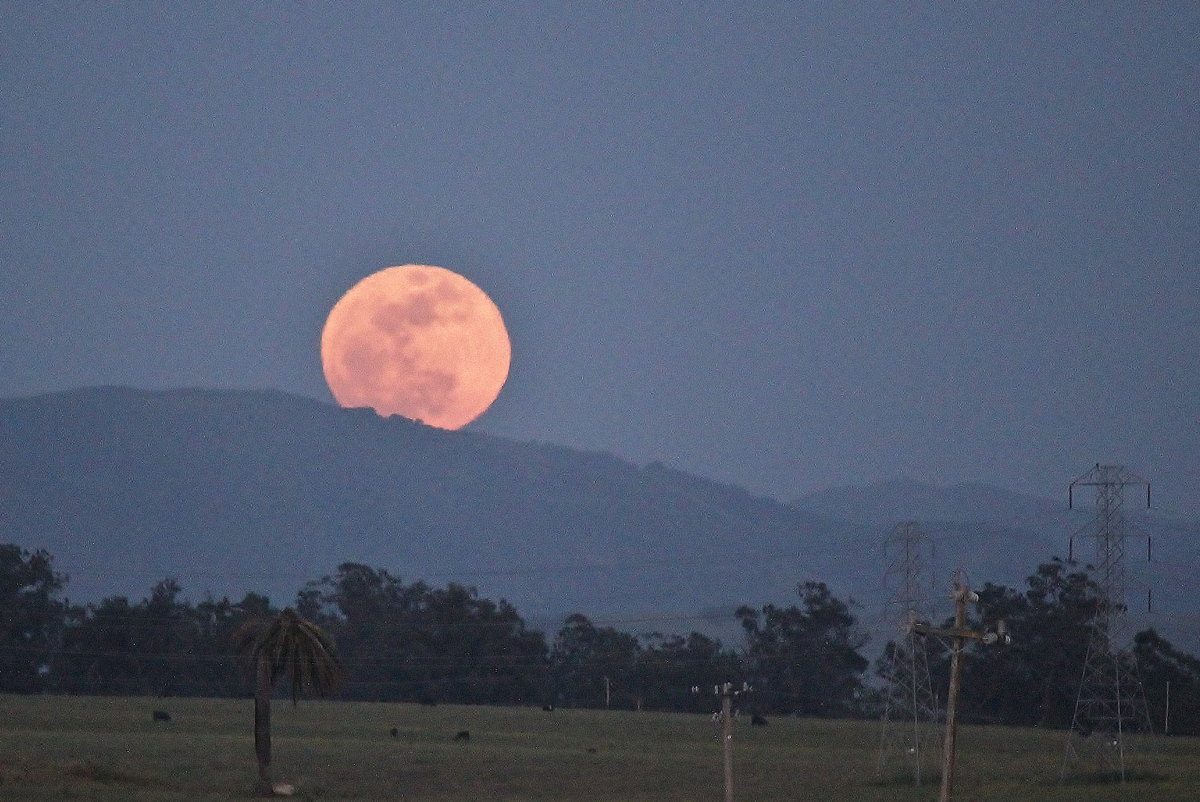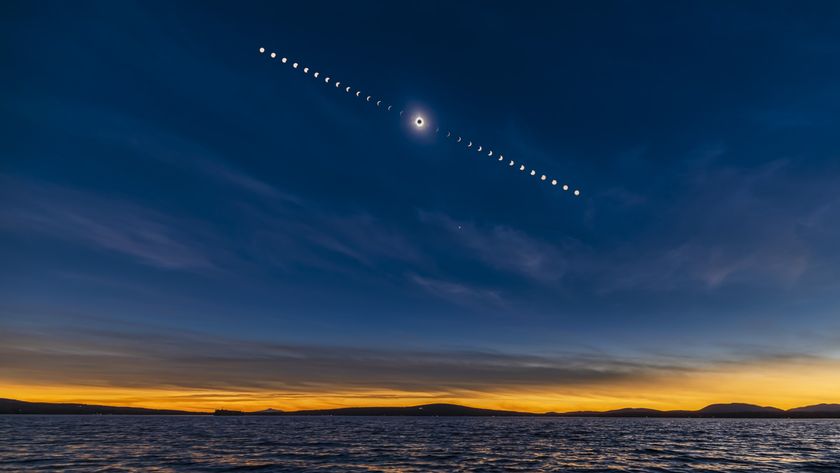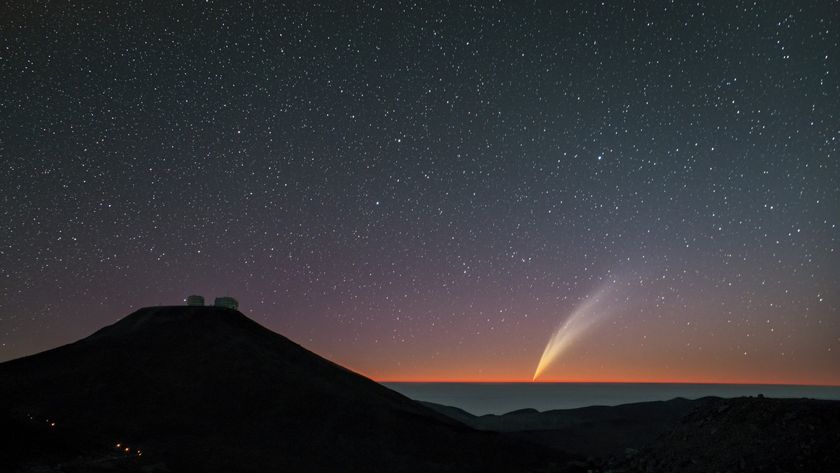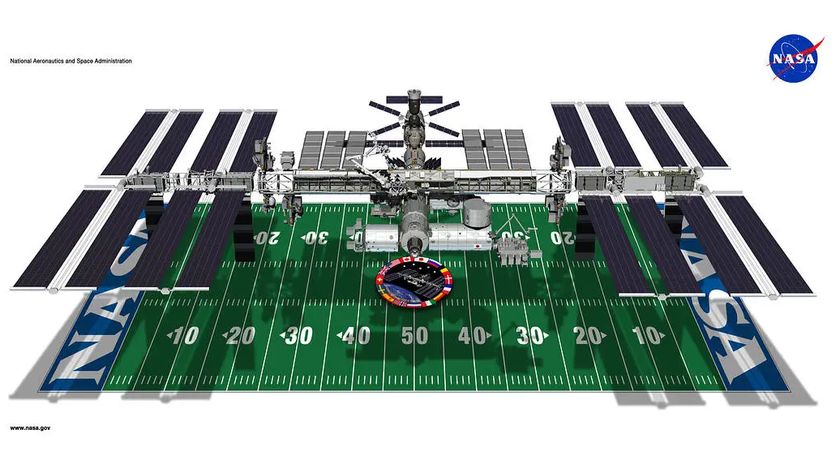Don't Fear the Supermoon, NASA Says

There is no reason for anybody to dread the largest full moon of 2013, known as the "supermoon," a NASA scientist says.
On Sunday (June 23), the moon will reach perigee — the closest point to Earth in the rocky satellite's orbit around the planet. Although some people have suggested that the supermoon might drive people crazy, cause natural disasters and wreak havoc on the tides, there is scant evidence in support of those claims, NASA assures.
NASA planetary geologist Noah Petro said today (June 21) that while the tides might be slightly higher because of the moon's close approach, it won't make a noticeable difference for the average observer. The only thing that humans might experience this weekend is a good lunar show. [Amazing Supermoon Photos of 2012]
"There should be no impact on anybody on the Earth," Petro said during a series of televised interviews on NASA TV. "There should be nothing unusual except maybe for more people staring up at the moon, which should be a wonderful thing."
You can watch a live webcast of the supermoon on SPACE.com on Sunday beginning at 9 p.m. EDT (0100 June 24 GMT), courtesy of the Slooh Space Camera, an online skywatching website (http://www.slooh.com).
To skywatchers that have been monitoring the moon recently, Earth's lunar neighbor could look slightly larger and brighter this weekend, but it might be difficult for the average observer to notice a difference in this full moon and the 11 other full moons this year, Petro said.
"It's a subtle difference," Petro said. "It really is a reward for people that are looking at the moon quite regularly."
Get the Space.com Newsletter
Breaking space news, the latest updates on rocket launches, skywatching events and more!
Still, Petro said, everybody should step outside to see the supermoon, weather permitting.
The moon will reach its peak fullness on Sunday at 7:32 a.m. EDT (1132 GMT). About half an hour before that, the moon will reach perigee, making it appear about 12 percent closer to the Earth than the full moon will be at apogee — the farthest point in the satellite's orbit — on Jan. 16 of next year.

At its closest approach on Sunday, the moon will be about 221,824 miles (356,991 kilometers) from Earth. On average, the moon is about 238,900 miles (384,402 kilometers) from the Earth.
The best time to catch the lunar wonder is just after sunset on Saturday night, but anytime this weekend will do, Petro said. Simply walk outside and look to the east today, Saturday or Sunday to catch the cosmic show.
Editor's note: You can see amazing photos photos of the 2013 supermoon in our gallery: Supermoon Photos: Biggest Full Moon of 2013 in Pictures . If you snapped an amazing photo of the Sunday Supermoon and you'd like to share it for a possible story or image gallery on SPACE.com, please send images and comments, including equipment used, to managing editor Tariq Malik at spacephotos@space.com.
Follow Miriam Kramer @mirikramer and Google+. Follow us @Spacedotcom, Facebook and Google+. Original article on SPACE.com.
Join our Space Forums to keep talking space on the latest missions, night sky and more! And if you have a news tip, correction or comment, let us know at: community@space.com.

Miriam Kramer joined Space.com as a Staff Writer in December 2012. Since then, she has floated in weightlessness on a zero-gravity flight, felt the pull of 4-Gs in a trainer aircraft and watched rockets soar into space from Florida and Virginia. She also served as Space.com's lead space entertainment reporter, and enjoys all aspects of space news, astronomy and commercial spaceflight. Miriam has also presented space stories during live interviews with Fox News and other TV and radio outlets. She originally hails from Knoxville, Tennessee where she and her family would take trips to dark spots on the outskirts of town to watch meteor showers every year. She loves to travel and one day hopes to see the northern lights in person. Miriam is currently a space reporter with Axios, writing the Axios Space newsletter. You can follow Miriam on Twitter.
Most Popular




